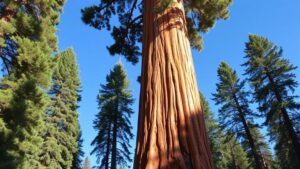The impact of storytelling in publicizing archeological expeditions.
The Impact of Storytelling in Publicizing Archaeological Expeditions
Storytelling has been a vital tool for humanity across cultures and eras, serving not only as a means of entertainment but also as a medium for information transfer. In archaeology, storytelling plays a crucial role in publicizing expeditions, bridging the gap between scholarly research and public enthusiasm. By crafting compelling narratives around archaeological discoveries, researchers can engage communities, inspire future generations, and catalyze funding and support for their work.
Understanding the Role of Storytelling in Archaeology
Archaeology is often perceived as a dry and technical field, comprising soil analysis, carbon dating, and meticulous cataloging of artifacts. But, the stories surrounding these artifacts–who created them, the cultures they represent, and the significance they hold–add emotional depth and context. For example, the excavation of the ancient city of Pompeii has been transformed from mere historical curiosity into a rich tale of life in the Roman Empire, grounded in the tragic eruption of Mount Vesuvius in 79 AD.
Case Studies of Successful Storytelling
Throughout history, various archaeological expeditions have leveraged storytelling to broaden their reach and impact. Notably, the tomb of King Tutankhamun, discovered in 1922 by Howard Carter, became a global sensation, not just for its wealth of artifacts, but for the narrative surrounding its discovery. lure of treasure, coupled with the mysterious curse associated with the tomb, captivated audiences worldwide, leading to increased public interest in archaeology, which resulted in a renowned exhibition touring major cities.
- The story of the tomb was meticulously detailed in articles and books, elevating it beyond academic circles.
- Movies and documentaries amplified the narrative, showcasing the expeditions drama.
Similarly, recent discoveries in the ancient city of Teotihuacan in Mexico have used storytelling to enhance public engagement. Archaeologists have not only communicated their findings through traditional academic methods but have also involved the public through social media campaigns, using rich visuals and narratives to recount the daily life of its ancient inhabitants. Such narratives helped demystify complex archaeological data, making it accessible and relatable.
Benefits of Effective Storytelling in Archaeology
The incorporation of storytelling in archaeology brings forth multiple benefits, including:
- Enhanced Public Engagement: Stories capture attention and make information easier to understand. Engaging narratives invite curiosity and encourage community participation in archaeological projects.
- Increased Funding Opportunities: Funders are often more inclined to support projects that have a compelling story, linking the excavation to larger themes like cultural heritage or societal impact.
- Educational Value: Storytelling facilitates learning. As narratives unfold, they provide context and make the educational aspects of archaeology more tangible.
Challenges in Storytelling for Archaeological Expeditions
Despite the advantages, there are challenges. Striking a balance between informational content and narrative flair is essential; over-exaggeration may lead to misinterpretations or the spread of misinformation. Take, for instance, the trend of sensationalism in media portrayals of archaeological finds, often disregarding nuanced academic dialogue in favor of drama. This can result in public misconceptions about the sites and their cultural significance.
Also, not all archaeological discoveries lend themselves to straightforward narratives. Some findings may require complex scientific explanations that could detract from engaging storytelling. In such cases, interdisciplinary collaboration–including historians, cultural anthropologists, and digital media experts–can lead to well-rounded narratives without oversimplifying the material.
Future Directions: The Role of Technology in Archaeological Storytelling
Looking ahead, technology is set to revolutionize how stories are told in the field of archaeology. Virtual Reality (VR) and Augmented Reality (AR) allow audiences to immerse themselves in historical settings, providing a dynamic way to visualize and interact with data. For example, the use of VR in the reconstruction of the lost city of Atlantis offers viewers a chance to step into the narrative, thus enhancing their emotional connection and understanding of the past. Enhanced platforms for storytelling, utilizing social media strategies, can further broaden accessibility and reach.
Conclusion: The Power of Narrative in Archaeology
Storytelling remains an invaluable asset in publicizing archaeological expeditions. By weaving together historical facts, human emotions, and cultural significance, archaeologists can foster a deeper appreciation of our shared past. As technology continues to evolve, the narratives crafted around archaeology stand to become even more engaging, ensuring that these stories resonate with present and future generations. It is through these narratives that the world is reminded of the richness of historical human experience and the importance of preserving our cultural heritage.
In summary, the art of storytelling not only amplifies the voice of archaeology but also invites the world to participate in its ongoing narrative, fostering dialogue, understanding, and collective memory.


